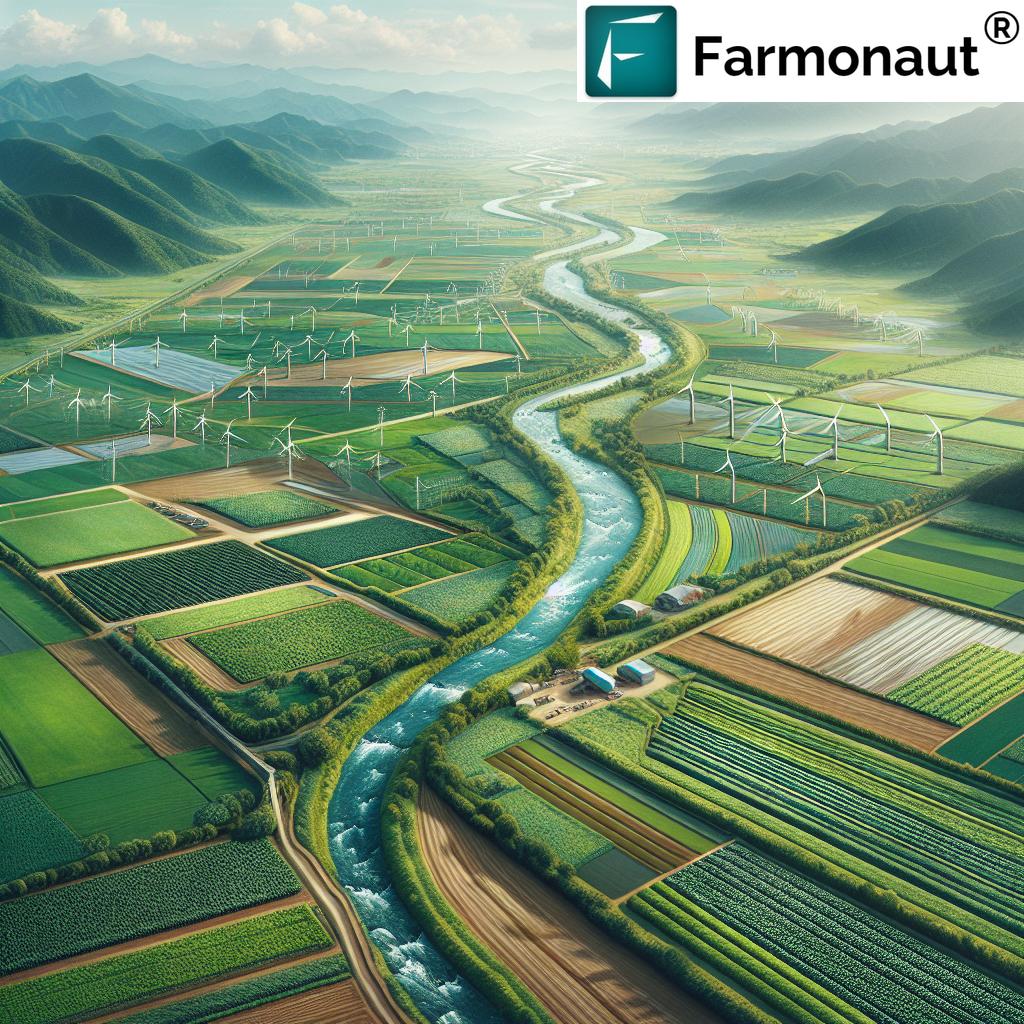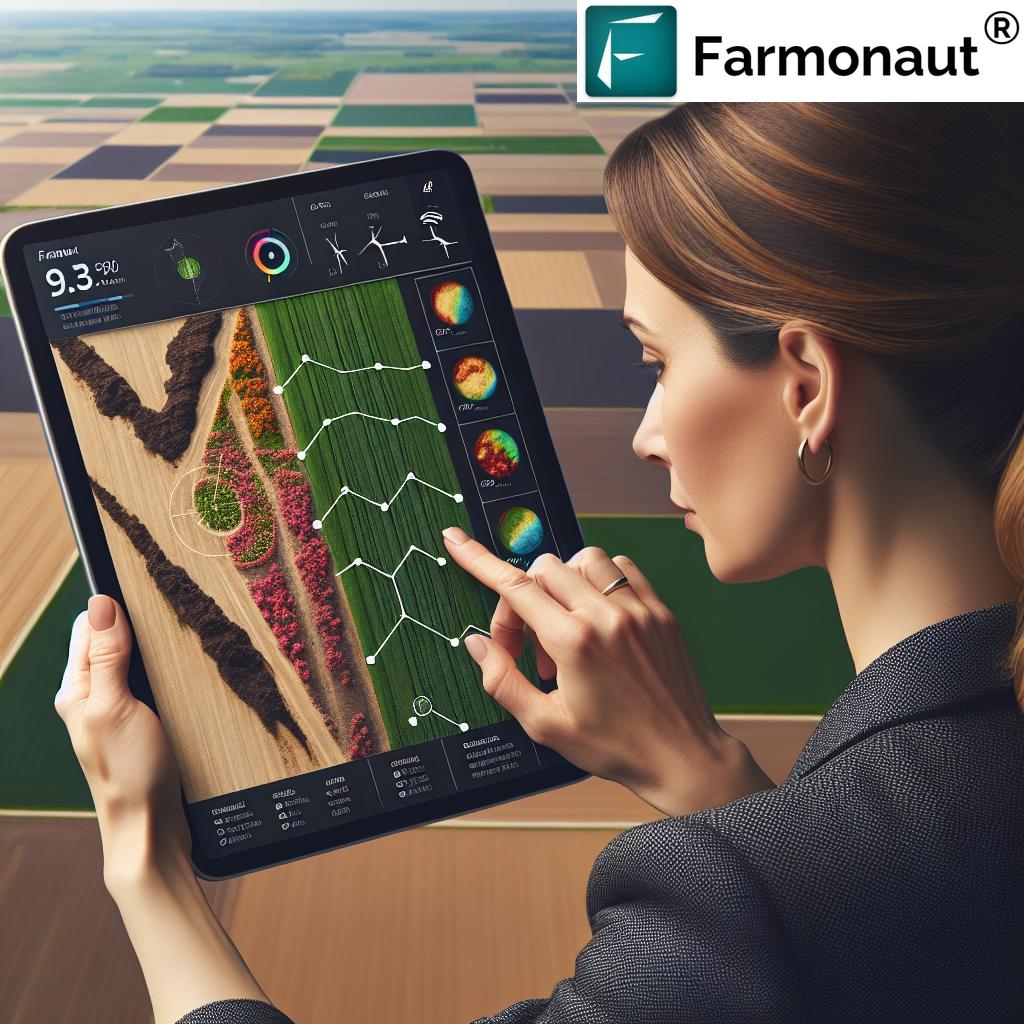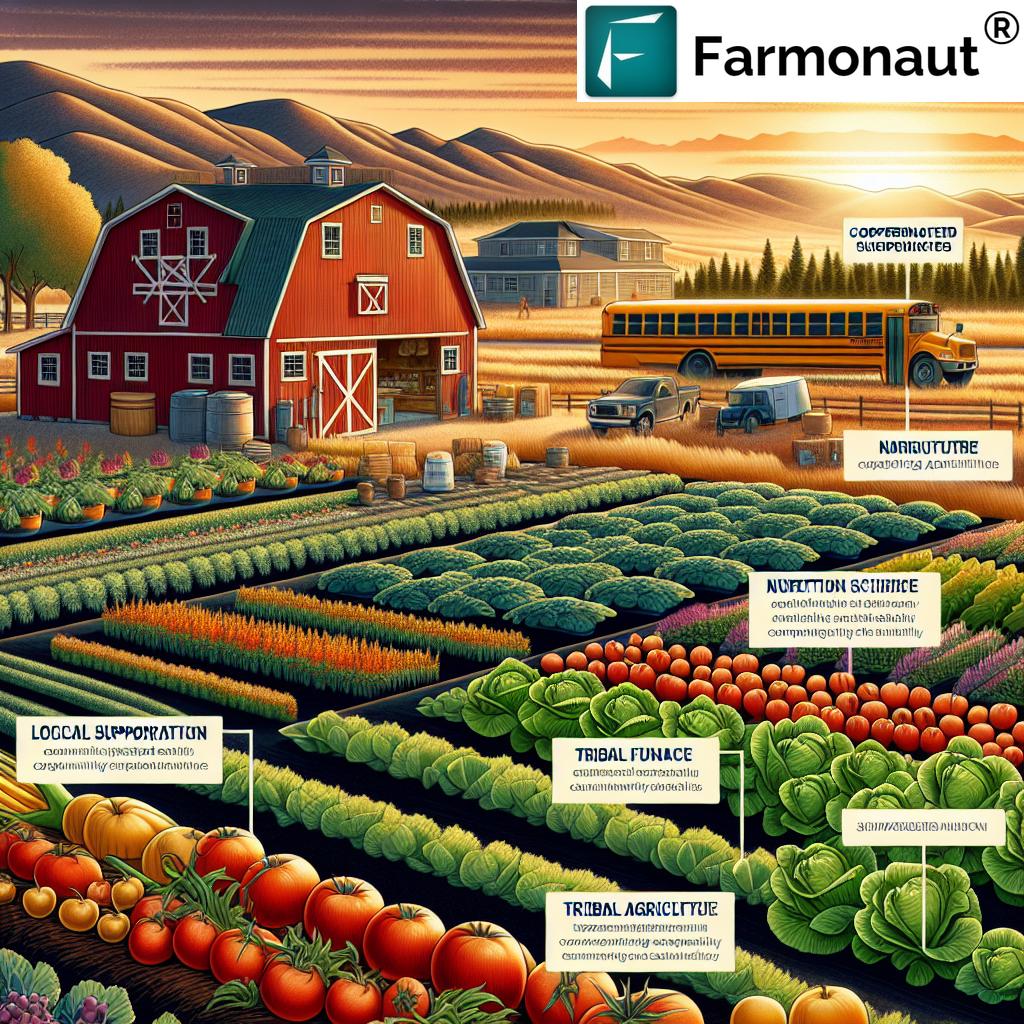Alaska Farming: Agriculture & Fish Farming in Alaska 2025—Sustainable Evolution in a Changing Climate
"Alaska’s fish farming industry produced over 35,000 metric tons of seafood in 2023, adapting to changing climate conditions."
Overview: Alaska Farming 2025—Opportunities and Challenges in a Changing Climate
Alaska farming in 2025 stands at a remarkable intersection of tradition and transformation. The agriculture of Alaska presents a unique, evolving landscape shaped by its northern latitude, extreme climate, and rich cultural heritage. Recent climate change-linked shifts have resulted in new opportunities, challenges, and a drive toward sustainable practices and technological advancement. Both crop cultivation and Alaska fish farming continue to adapt and develop, reshaping the state’s agricultural identity while driving resilience and sustainability.
The emerging opportunities in Alaska’s agricultural sectors are deeply driven by the need for local fresh produce and seafood, leading to innovative solutions for overcoming historic climate and soil limitations. As farmers in the state respond to a changing environment, we explore how agriculture Alaska is poised for growth, adaptation, and leadership in climate-resilient methods by 2025 and beyond.
"By 2025, over 60% of Alaska’s farms are expected to implement sustainable practices to combat environmental challenges."
The Unique Landscape of Agriculture Alaska: Regions and Traditions
The agriculture of Alaska has always presented distinctive challenges and opportunities. Covering a vast area of more than 663,000 square miles, Alaska combines historical farming methods with emerging innovations in modern agriculture and fish farming. This northern state is defined by its:
- Harsh weather conditions: Prolonged cold, extreme conditions, and significant weather unpredictability
- Short growing seasons: Outdoor crops often face less than 100 frost-free days per year
- Permafrost & limited arable land: Soil devastation and limited pockets of farmable land
- Geographic distribution: Productive agricultural activity is concentrated in the Interior, Southcentral, and Southeast regions
Despite these constraints, many small farms thrive across the state. The central Matanuska Valley, Tanana Valley, and Kenai Peninsula are especially notable for their vegetables and grains. The combination of longer daylight hours during the summer months allows for rapid growth of crops such as potatoes, carrots, cabbage, and leafy greens.
Traditional agriculture Alaska has long focused on root vegetables and hardy leafy greens, but climate-driven opportunities are inspiring more varied crop cultivation (including experimental grains and berries).
Discover regenerative and climate-smart agriculture approaches relevant for Alaska farming in 2025.
Changing Growing Seasons in Alaska Farming: Opportunities with a Warming Climate
In 2025, one of the most significant changes impacting agriculture Alaska is the shifting of the growing season due to warming temperatures linked to climate change. This trend, while presenting risks such as increased pest pressure and unpredictable weather patterns, also unlocks opportunities for farmers to expand their crop selections and to adapt their methods.
Climate-Driven Impacts on Alaska Agriculture
- Extension of the growing season—some areas have gained several additional frost-free weeks, “pushing the boundaries” of what crops may thrive.
- Crops previously deemed unsuitable—including grains and berries—are now being experimentally cultivated in regions such as the Interior and Southcentral Alaska.
- Increased daylight during summer months—enables large, high-yield vegetables, such as Alaskan cabbages, which often reach record sizes.
- Adaptive management is now a necessity—farmers must regularly monitor unpredictable weather patterns, soil health, and water availability.
However, challenges remain: unpredictable climate patterns can bring damaging frosts, excessive rainfall, or droughts even during “safer” months. The pressure from new pests and shifting disease patterns—previously less common in the state—is now a real threat to both traditional and innovative agriculture methods.
The need for information-driven risk management and data-rich environmental monitoring has never been greater.
Technological Innovations and Sustainable Farming & Fish Farming Practices in Alaska
Technological advances are transforming what alaska farming means in 2025. Growing demand for sustainable production and local, fresh produce has resulted in a surge of innovation. Some of the most impactful changes include:
- Greenhouse farming: Crucial for year-round crop production in the face of short outdoor growing seasons.
- Hydroponic and aquaponic systems: Controlled Environment Agriculture (CEA) counterbalances outdoor limitations, enabling pest-free, efficient, and resource-conserving food production.
- AI-driven agricultural planning: Farmers increasingly turn to data for adaptive management—predictive models, weather forecasts, and remote monitoring bring new resilience into local agriculture ecosystems.
- Permaculture and regenerative agriculture: Organic methods, soil health maximization, and biodiversity are foundational for future-proofed, sustainable practices.
- Solar and renewable energy: Off-the-grid energy systems are critical for remote farms, reducing carbon footprints and supporting Alaska’s sustainability focus.
Local food systems are an umbrella trend. On small farms and urban plots, CEA, vertical farm setups, and community-supported agriculture groups play a bigger role than ever.
The combination of technology, resource conservation, and local stewardship is powering the state’s reputation for “green” growth in both agriculture alaska and alaska fish farming.
How EV farming trucks and mobile vertical farms drive resource-efficient production and sustainability.
Sustainability as a Core Focus
The state is also leading in:
- Water conservation—drip irrigation, rain catchments, and smart water scheduling are crucial, especially as weather unpredictability grows.
- Soil regeneration—cover crops, composting, and minimal tillage preserve organic content and ecosystem resilience.
- Community & Indigenous leadership in land management—collaborative stewardship upholds environmental and cultural sustainability.
These innovative methods directly address the unique risks presented by Alaska’s changing climate, building adaptable, local food and fish farming economies.
Explore how satellite-based farm monitoring supports large-scale farming and adaptation in Alaska.
Alaska Fish Farming in 2025: A Vital and Expanding Sector
Alaska fish farming—encompassing both wild fisheries management and the expanding aquaculture sector—remains a cornerstone of the Alaska economy and identity. The combination of clean, cold waters and a strict regulatory focus on sustainability provides the foundation for one of North America’s most trusted seafood industries.
Key Elements of Alaska Fish Farming in 2025
- Salmon remains the star; trout and a variety of shellfish (mussels, oysters, geoducks) are consistently grown in marine farms.
- Sustainable practices are a state mandate: strict limits on antibiotics, external inputs, and feed resources protect wild populations and the broader environment.
- Innovative aquaculture systems—like closed containment tanks and integrated multi-trophic aquaculture—limit environmental risks, disease transfer, and improve food security.
- Technological advancements in monitoring, water quality maintenance, and disease management improve biosecurity and streamline production.
By 2025, the state’s fish farming sector benefits from an increase in domestic demand, robust export markets, and an expanding workforce skilled in both traditional and innovative techniques. Not only is this sector vital for local protein security, it also contributes to global seafood sustainability benchmarks.
See how AI-powered monitoring and mapping advances are reshaping modern aquaculture from Alaska to Vancouver and beyond.
Comparison Table: Traditional vs. Sustainable Farming & Fish Farming Practices in Alaska (2025)
The following table summarizes key differences between traditional and sustainable practices in Alaska’s evolving agricultural and aquaculture landscape. By 2025, the shift toward low-impact, efficient, and innovative systems is clear.
| Practice Type | Estimated Adoption Rate (2025) (%) |
Climate Impact (Est. Annual Carbon Emissions) |
Water Usage (Est. Liters/Year per Acre or Unit) |
Economic Output (USD, per Acre or Unit) |
Key Sustainable Innovations Used |
|---|---|---|---|---|---|
| Traditional Agriculture | 35% | 4–6 MT CO2e/acre | 180,000+ | $8,000–$12,000 | Minimal; standard irrigation and chemical inputs |
| Sustainable Agriculture | 65% | 1–2 MT CO2e/acre | 60,000–80,000 | $9,500–$15,000 | Greenhouses, CEA, drip irrigation, cover crops, AI monitoring |
| Traditional Fish Farming | 20% | 8–10 MT CO2e/unit | 2,500,000+ | $15,000–$25,000 | Pond/net-pen systems, commercial feed, minimal monitoring |
| Sustainable Fish Farming (Aquaculture) | 80% | 3–4 MT CO2e/unit | 1,000,000–1,500,000 | $20,000–$35,000 | Closed containment, smart feeding, integrated multi-trophic aquaculture, blockchain traceability |
—Estimated values for 2025. Source: State agriculture and aquaculture data, industry surveys, expert projections.
How remote satellite-based crop monitoring via web apps is empowering decision-making and resilience in Alaska’s agriculture.
Challenges Facing Alaska Farming and Its Future Outlook
While Alaska farming in 2025 is defined by optimism and innovation, there remain persistent challenges that the sector must address for sustained growth:
- Remote Infrastructure Limitations: Transportation of goods and inputs across a vast area increases costs and risks supply bottlenecks for local communities.
- High Operating and Labor Costs: Scarcity of skilled farm workers and distance from lower-48 markets make operations resource-intensive.
- Ongoing climate unpredictability: Changing weather patterns, new pest/disease pressures, and potential for soil degradation require adaptive management at all farm scales.
- Environmental stewardship requirements: Ensuring that growth in both agriculture and fish farming does not lead to over-exploitation or harm to delicate northern ecosystems is a constant focus.
- Access to technology and data-driven solutions: Rural and indigenous communities require additional support and education to leverage new tools and methods.
The future, while promising, will depend on the Alaska farming community’s ability to blend traditional knowledge with modern advances, build adaptive policies, and invest in robust support infrastructure.
Discover how affordable satellite insights are transforming farming, sustainability, and productivity—even in Alaska’s unique conditions.
Farmonaut Satellite Technology: Supporting Sustainable and Resilient Alaska Farming
The power of timely, actionable data cannot be underestimated—especially in a unique, evolving landscape like Alaska. Our Farmonaut platform provides cost-effective satellite-based services for crop monitoring, soil health assessment, fleet resource management, and traceability—enabling farmers and agribusinesses in the state to:
- Remotely monitor vast, dispersed fields with high-resolution satellite imagery
- Track crop health and soil moisture using AI and machine learning analytics
- Manage environmental compliance and regulatory requirements using real-time environmental impact monitoring
- Streamline logistics and reduce costs through fleet and resource management tools
- Enhance transparency with blockchain-based traceability for both crops and fish
- Access affordable satellite verification and monitoring for crop loans and insurance
By integrating these tools via our web, Android, and iOS apps, individual farmers, agri-businesses, and fisheries can make better decisions, even in remote locations with otherwise limited access to on-the-ground technical support.
If you’re looking to build a more resilient, productive, and traceable food supply chain in Alaska, learn more about our Large Scale Farm Management platform—the ultimate toolkit for agricultural planning and monitoring at scale.
Blueberry and berry farming expansion—discover what’s possible for northern climates as Alaska warms.
Sustainable circular economy ideas for plastics and resource use—relevant for Alaskan agriculture’s future.
FAQ — Alaska Farming, Fish Farming & Agriculture 2025
What are the main crops grown in Alaska farming?
The main crops include potatoes, carrots, cabbage, broccoli, kale, lettuce, and increasingly, grains like barley and wheat, along with berries adapted for northern climates.
Are greenhouses and hydroponics common in Alaska?
By 2025, greenhouse and hydroponic systems are widely used, allowing farmers to extend crop production into the winter, conserve water, and reduce exposure to unpredictable outdoor weather and pests.
Why is Alaska fish farming considered sustainable?
Strict regulations and innovative aquaculture approaches (closed containment, integrated multi-trophic systems) keep disease and environmental impacts low, protect wild stocks, and maintain Alaska’s reputation for clean, responsible seafood.
What are the key climate-related risks for Alaska agriculture?
Unpredictable frosts, increased pests, heavy rainfall or drought, and shifting soil chemistry are primary risks, which require adaptive, data-driven management to mitigate.
How does Farmonaut support Alaska’s farming community?
We provide affordable, satellite-driven crop health monitoring, weather analytics, fleet management, and supply chain traceability tools—empowering Alaska farmers to optimize production and sustainability, even in remote areas.
Can Alaska farming feed its local communities effectively?
While Alaska imports a substantial proportion of food, growing investment in local production, greenhouse expansion, and climate-adaptive aquaculture are rapidly enhancing local food security and reducing reliance on distant supply chains.
Conclusion: Alaska Farming 2025—Resilience, Innovation & Sustainability at the Frontier
Alaska’s farming and fish farming sectors are at a crossroads in 2025, embracing both the challenges and the immense opportunities offered by a changing climate. While vast distances, harsh weather, and limited arable land continue to present hurdles, the drive for sustainability, technological innovation, and community resilience is producing an agricultural revolution.
With controlled environment agriculture systems, cutting-edge aquaculture, satellite-driven insights, and a deep-rooted culture of land stewardship, agriculture Alaska is developing practical solutions to feed its people, protect its ecosystems, and remain economically vibrant well into the future.
Farmonaut is committed to supporting this vision by democratizing access to advanced satellite technology and real-time data—empowering individual farmers, businesses, and policy makers to create data-driven, sustainable food systems that are built to last.
In summary: The agricultural landscape of Alaska epitomizes adaptability, blending tradition and innovation as it responds to climate adversity, technological opportunity, and a collective commitment to ecological sustainability. As we look to the horizon of 2025 and beyond, Alaska stands not just as a frontier in geography, but in the resiliency of its agriculture and fish farming communities, setting new standards for the world.












